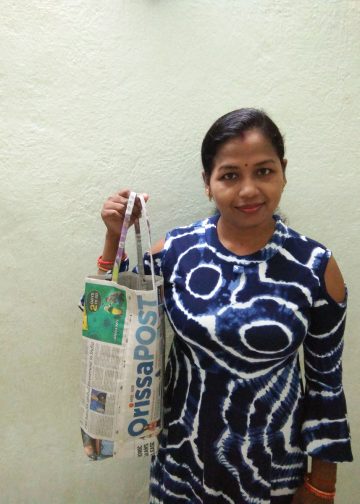Berhampur: The Chief Election Commission, in an attempt to attract the visually impaired voters to the poll booths and help them vote in the elections, has decided to include Braille ballot papers along with EVMs in the upcoming polls, a report said Tuesday.
The matter came to the fore after the Red Cross owned state’s only Braille printing press here rolled out more than 1,000 Braille ballot papers in the first phase recently. The move is aimed at increasing the vote percentage and to ensure a free, fair and transparent election.
Chief Electoral Officer Surendra Kumar had stressed the use of special Braille ballot papers along with the EVMs during a meeting with the Collectors of south Odisha at the Ganjam Collectorate December 12. Earlier, the CEO had also issued a letter to the Braille press September 20 for printing of the ballot papers. The officials who are likely to be deployed in election work are currently being trained in the use of the new ballot papers
It is, however, apprehended that lack of adequate number of staff might prove an obstacle to the printing of the special ballot papers.
The visually impaired voters will first have to identify the name of their candidates and parties of choice in the special ballot papers and then click on the button on the EVMs to vote.
Sources said June 28, the Chief Election Commission had written to all the Chief Electoral Officers in the states to arrange for Braille ballot papers to help the visually impaired persons to cast their votes in the upcoming general elections. The Braille ballot paper facilities will be available at every booth for the visually impaired persons.
The special ballot paper will be attached to the EVMs on its side where the serial number of the candidate, his/her name and party will be written in Braille script. The name of the independent candidates will be mentioned as independents instead of any party in the special ballot paper.
Similarly, the NOTA facility will also be available in the special ballot papers. A single ballot paper would carry the names of maximum number of contestants (16) like EVMs which also carry the names of equal number of candidates.
Two ballot papers will be used if there are more than 16 candidates in any Assembly or Lok Sabha segments. There will be page marking of one and two in both the ballot papers which will be available in regional language as well as in English if necessary.
The visually impaired voters after arriving at the booth will collect the ballot papers from the presiding officer. Later, they will select the serial number, name of the candidate and parties and then click on the button corresponding to the name of their choicest candidates in the EVMs. The EVMs will have similar serial numbers against the name of the candidates as in ballot papers.
After casting their votes, they will have to return the ballot papers to the presiding officer before leaving the booth. According to Section 49 (N) of the conduct of election rules, a visually impaired person can take the help of an assistant while casting their votes in the booths.
PNN







































